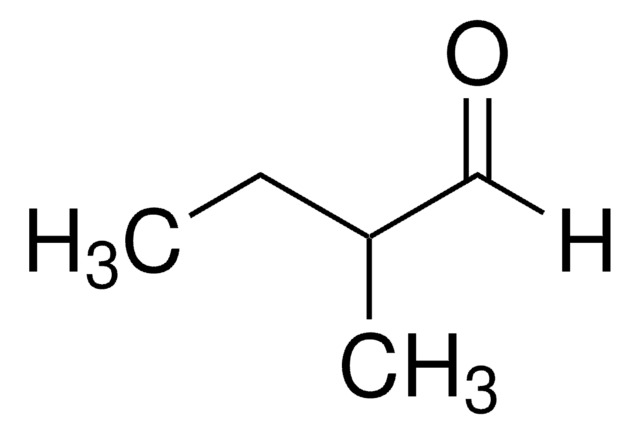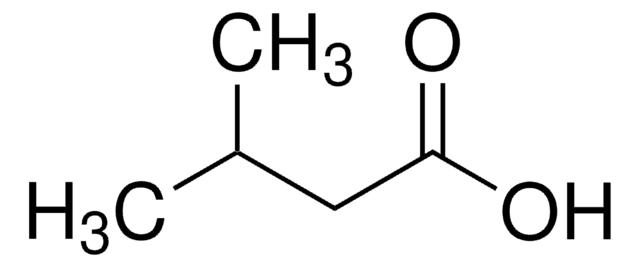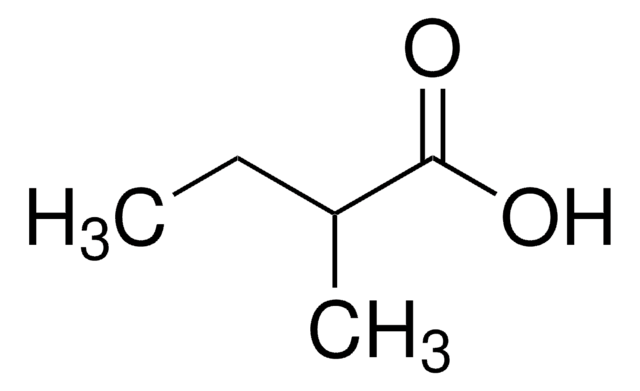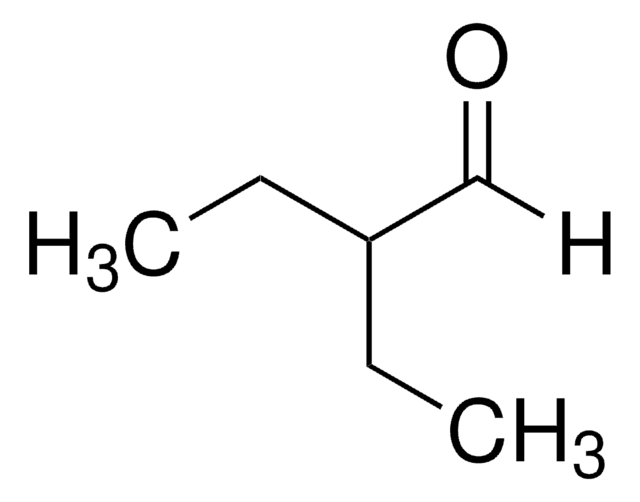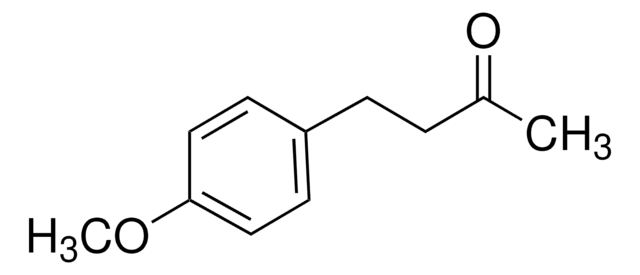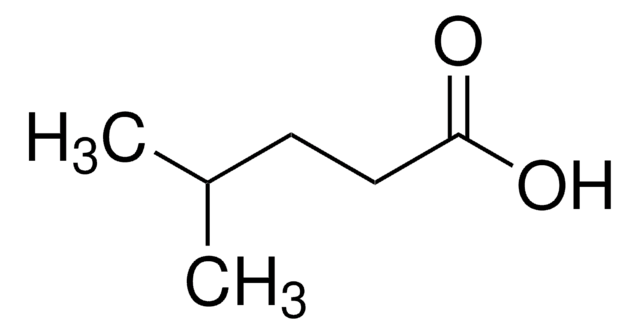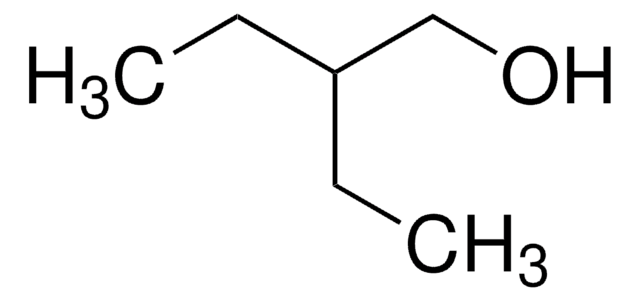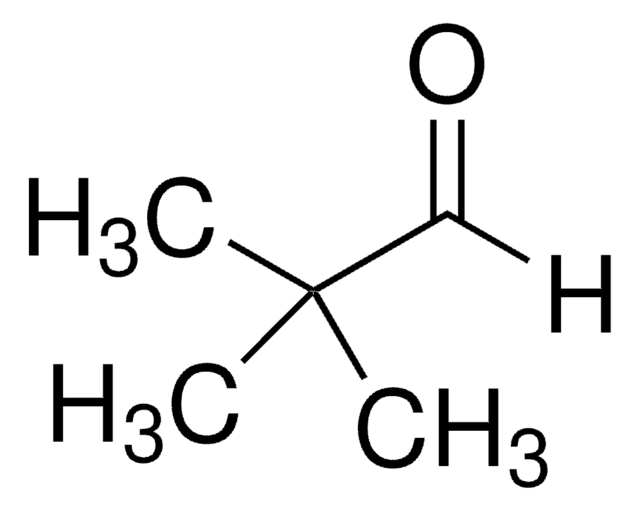M33476
2-Methylbutyraldehyde
95%
Sinonimo/i:
α-Methyl-n-butanal, α-Methylbutanal, α-Methylbutyric aldehyde, (±)-2-Methylbutanal, 2-Ethylpropanal, 2-Formylbutane, 2-Methylbutanal
About This Item
Prodotti consigliati
Livello qualitativo
Saggio
95%
Stato
liquid
Indice di rifrazione
n20/D 1.3919 (lit.)
P. ebollizione
90-92 °C (lit.)
Densità
0.806 g/mL at 20 °C
0.804 g/mL at 25 °C (lit.)
Stringa SMILE
[H]C(=O)C(C)CC
InChI
1S/C5H10O/c1-3-5(2)4-6/h4-5H,3H2,1-2H3
BYGQBDHUGHBGMD-UHFFFAOYSA-N
Cerchi prodotti simili? Visita Guida al confronto tra prodotti
Applicazioni
- 2-amino-3-cyanopyridine derivatives via multicomponent condensation with various acetophenones and malononitrile in the presence of ammonium acetate.
- N,N-Diethyl-2-methyl-1-butanamine by reacting with diethylamine via Rh-catalyzed reductive amination reaction in the presence of molecular hydrogen.
- α-(2-Methylbutylidene)benzeneacetonitrile by condensation reaction with benzyl cyanide using tricyclic strong nonionic Lewis bases.
Avvertenze
Danger
Indicazioni di pericolo
Consigli di prudenza
Classi di pericolo
Aquatic Chronic 2 - Eye Irrit. 2 - Flam. Liq. 2 - Skin Sens. 1 - STOT SE 3
Organi bersaglio
Respiratory system
Codice della classe di stoccaggio
3 - Flammable liquids
Classe di pericolosità dell'acqua (WGK)
WGK 2
Punto d’infiammabilità (°F)
23.0 °F
Punto d’infiammabilità (°C)
-5 °C
Dispositivi di protezione individuale
Eyeshields, Faceshields, Gloves, type ABEK (EN14387) respirator filter
Scegli una delle versioni più recenti:
Possiedi già questo prodotto?
I documenti relativi ai prodotti acquistati recentemente sono disponibili nell’Archivio dei documenti.
I clienti hanno visto anche
Global Trade Item Number
| SKU | GTIN |
|---|---|
| M33476-250G | 4061836696610 |
| M33476-50G | 4061834050148 |
Il team dei nostri ricercatori vanta grande esperienza in tutte le aree della ricerca quali Life Science, scienza dei materiali, sintesi chimica, cromatografia, discipline analitiche, ecc..
Contatta l'Assistenza Tecnica.